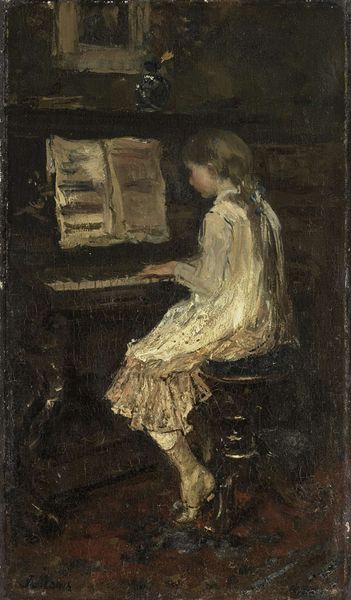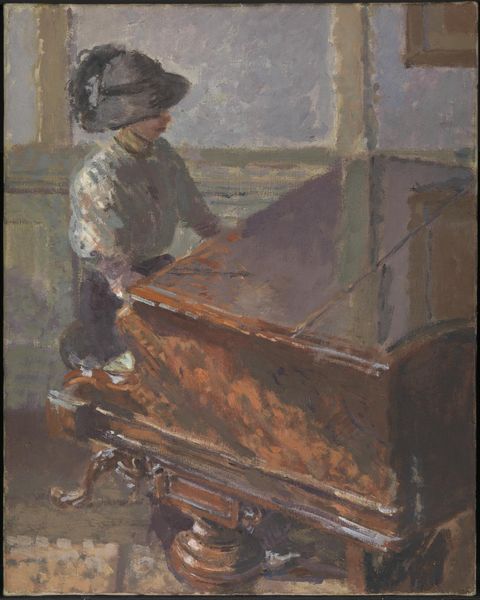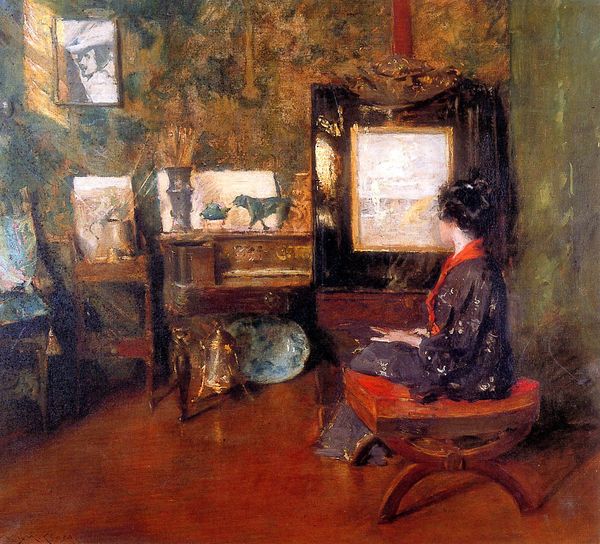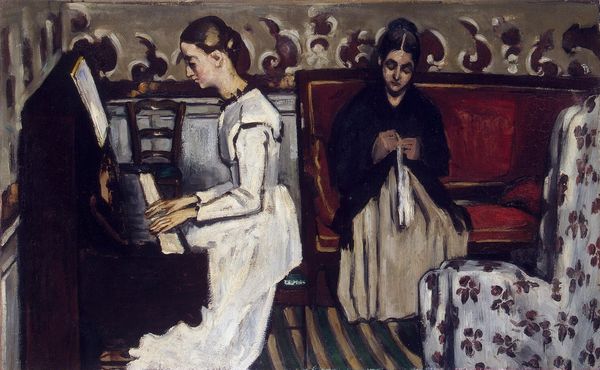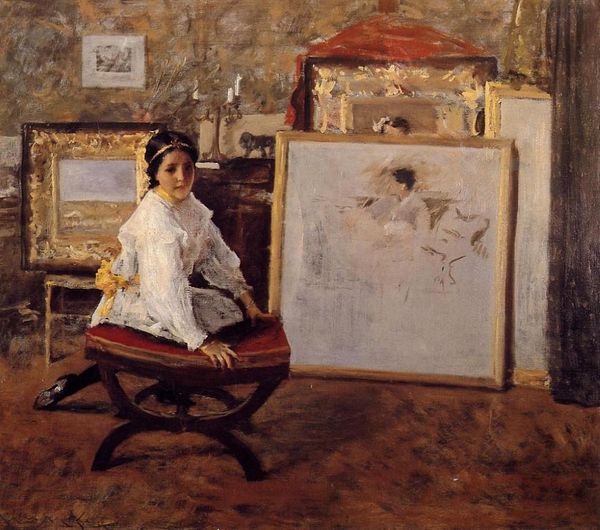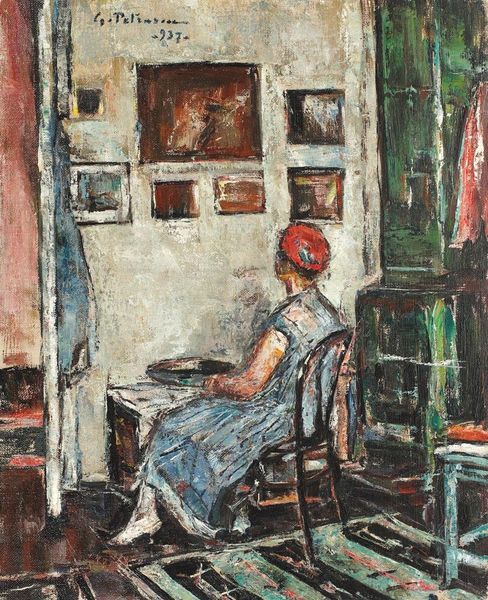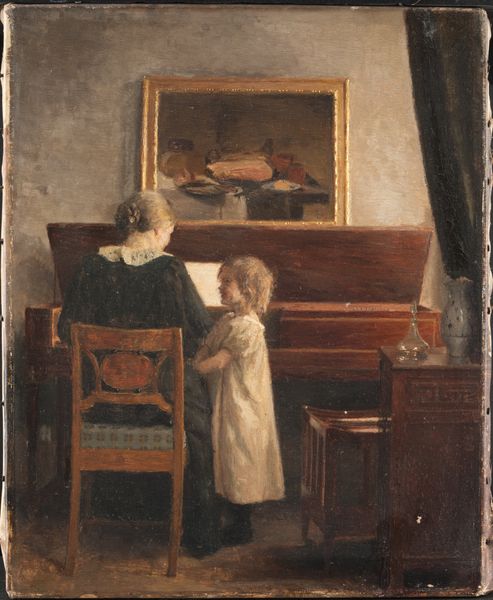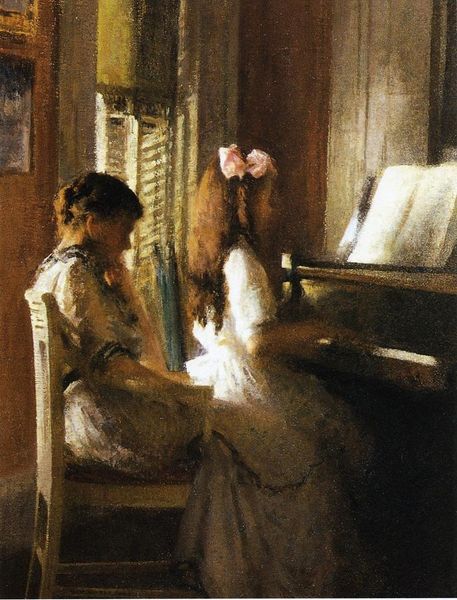
Dimensions: 32.4 x 37.8 cm
Copyright: Public domain
Editor: This is Édouard Vuillard’s "Woman in the Studio," painted in 1915 with oil paint. I find the tones quite muted and earthy; it almost feels like a glimpse into a very private moment. What story do you see being told in this scene? Curator: It's interesting that you see it as private. I think Vuillard, working within the Intimist movement, uses the domestic space to explore broader questions about the role of women in society during a period of intense social change. The studio, a space traditionally dominated by men, is now occupied by a woman, though her posture suggests quiet contemplation rather than active creation. Editor: That’s a great point about the shifting social landscape! But how does the art world factor into that? Is she a painter herself, or is she more of a muse, positioned within the art world but not fully participating? Curator: That ambiguity is precisely where the tension lies. Vuillard often depicted women within bourgeois domestic settings, questioning their confinement and their roles as either objects of beauty or silent observers. The unfinished canvases in the studio around her create a space in which we are unsure if this is *her* painting practice or that of a man, adding another layer to how we perceive her. Does the fact that this was painted during World War I affect your understanding of the subject’s role, especially within art? Editor: Absolutely. During that period, women took on roles previously held by men. Seeing her here, surrounded by art, I start to consider her as part of that shift, possibly a new artistic voice emerging. It changes my view considerably. Curator: Precisely. The painting can be read as a subtle commentary on women's evolving status and their quiet revolution within the established social structures, which includes the very structure of the art world itself. Editor: That’s really insightful! I initially saw intimacy, but now it seems to resonate more with ideas about social transformation. Thanks for offering that perspective. Curator: My pleasure. It highlights how the meaning of a seemingly simple domestic scene can shift depending on the socio-historical context in which you view it.
Comments
No comments
Be the first to comment and join the conversation on the ultimate creative platform.
